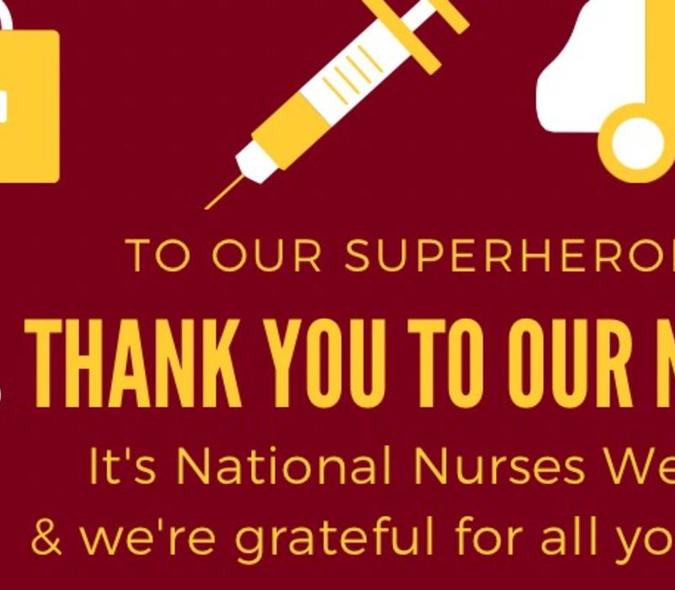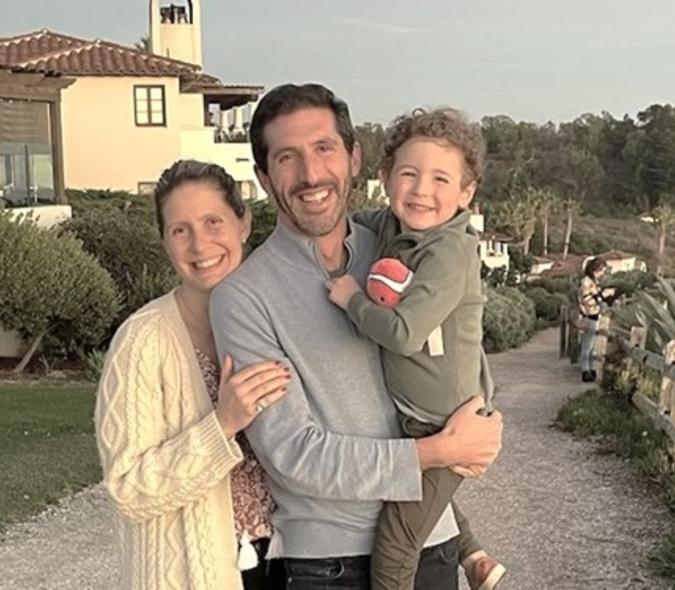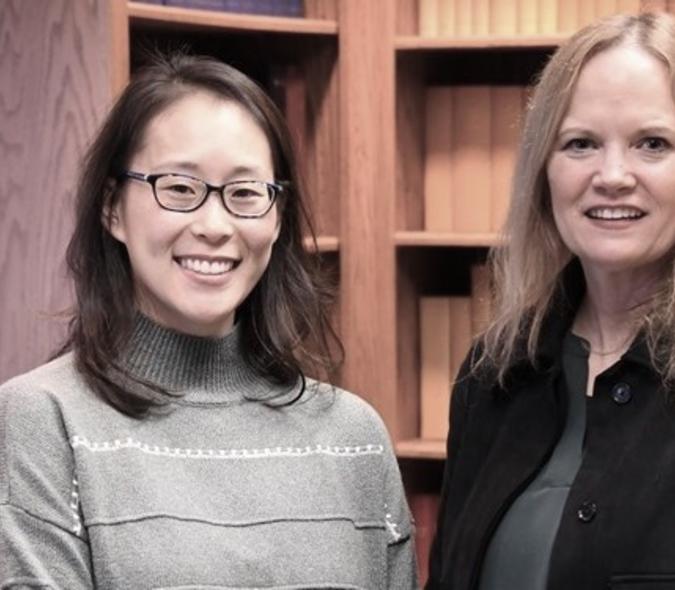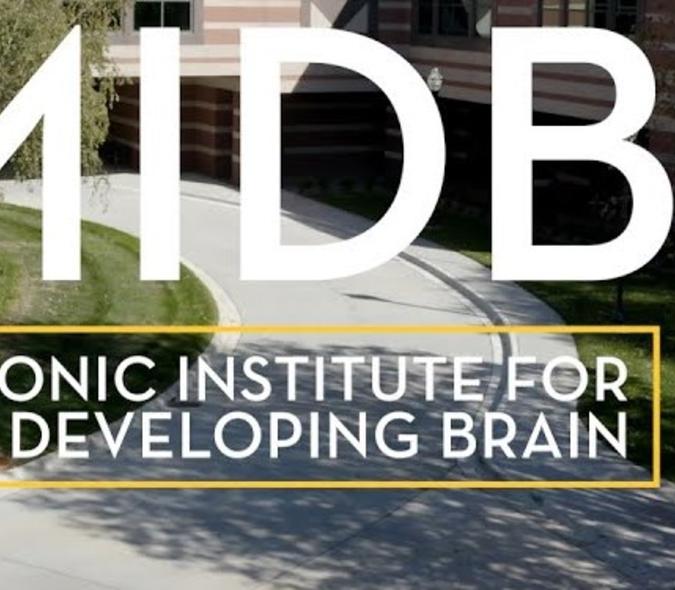
Interprofessional collaboration at the U aims to improve mental health treatment for children and adolescents
Primary care providers in the United States deliver a substantial portion of mental health care across the lifespan. While pediatric primary care providers, including family medicine physicians and pediatricians, prescribe 85 percent of psychotropic medications taken by children, a significant number of these providers express discomfort and uncertainty about diagnosing and treating their patients’ mental health concerns.1
In 2013, 65 percent of pediatricians surveyed by the American Academy of Pediatrics indicated that they lacked training in recognizing and treating mental health problems in their patients. As of 2017, fewer than half of pediatric residents surveyed felt that their competence in dealing with mental health problems was good to excellent.2
Enhancing education
While Family Medicine has had behavioral health education as a core curriculum component since its inception3, feedback from graduating residents has indicated a need for enhanced education specific to pediatric mental health. This led to a collaboration in 2019 between the U’s Departments of Psychiatry and Behavioral Health and Family Medicine and Community Health. Parallel conversations were occurring in Pediatrics, Psychiatry and Behavioral Science, and Nursing.
These efforts across different disciplines and departments evolved into the current collaboration that includes Pediatrics, Psychiatry and Behavioral Science, Family Medicine and Community Health, and Nursing, with the unified goal of working together to bridge the gap exposed by the statistics cited above.
More learner opportunities
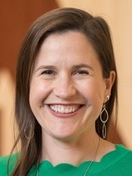
“We started talking about how to improve care for kids and teens with behavioral and emotional health concerns by creating more opportunities for our learners,” said Emily Borman-Shoap (pictured here), MD, Vice Chair for Education and Associate Professor, Department of Pediatrics. “Through a series of meetings and working with our family medicine, nursing, and psychiatry colleagues, we settled on an idea to try and bring the expertise of our psychiatry faculty into the primary care learning setting.”
One of the key strengths of the current group is that it is highly interprofessional. In addition to Borman-Shoap in the Department of Pediatrics, there are members from the:
Department of Psychiatry and Behavioral Sciences
- Assistant Professor and Child and Adolescent Psychologist Katie Lingras, PhD, LP
- Assistant Professor Child and Adolescent Psychiatrist Amanda Schlesinger, MD
- Child and Adolescent Mental Health Division Director and Associate Professor Katie Cullen, MD
- Assistant Professor and Child and Adolescent Psychiatrist Katie Steingraeber, MD
- Project Coordinator Greta Alquist
Department of Family Medicine and Community Health
- Assistant Professor Christine Danner, PhD, LP
- Professor and Vice Chair for Research, Jerica Berge, PHD, MPH, LMFT, CFLE
School of Nursing
- Clinical Professor Mary Benbenek, PhD, APRN, CPNP-PC, FNP-BC, FAANP
- Clinical Professor Cheri Friedrich, DNP, APRN, CPNP-PC, IBCLC
- Pediatric Primary Care DNP student Hannah Balder, BSN RN.
Extra eyes and ears
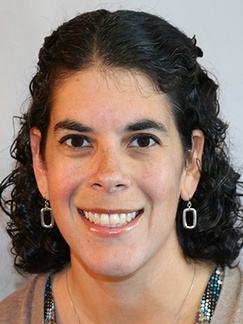
In the model the group has developed, which built on the previous work done in 2019 by Lingras and Danner, the child and adolescent mental health experts are present in the room in which trainees go over their cases with their primary care supervisors, according to Lingras (pictured here). “We provide an extra set of eyes and ears for discussing mental health issues,” she said. “We are physically present in the clinics and have a virtual room open to nursing, family medicine, and pediatrics learners.”
The group applied for and received Medical School funding designated for innovative projects to help support their work. “The idea is to bring the right expertise to the front lines of caring for kids and teens,” said Borman-Shoap. “We’ve really benefited from the knowledge of our psychiatry colleagues who sit right in clinic with us, either virtually or in-person. When a primary care learner sees a patient and they come out of the room and say, ‘I think this kid might be depressed or have anxiety or they’ve experienced a traumatic event and I’m not sure what to do next,’ we can get that child the right care at the right time because of the expert consultation we have at our fingertips.”
Geared toward learners
As noted, the project is geared toward learners in family medicine, pediatrics, and nursing (nurse practitioners). “When learners are in clinic Monday through Friday, one of our mental health consultants is available from 1:30 to 5 pm every afternoon,” said Borman-Shoap. “We have multiple ways of getting in touch with them. The learner can enter a Zoom consult room where they connect with the consultant, or the consultant may be sitting right next to them. They’re available to assist any provider caring for a patient who might have a mental health concern.”
The clinics involved include M Health Fairview Children’s Clinic, M Health Fairview Eagan, and M Health Fairview Bethesda. Nurse practitioner learners are placed in M Health Fairview clinics throughout the Twin Cities metro area.
Everyone benefits

Schlesinger (pictured here), who considers this work one of the most engaging parts of her week, noted, “During these consults, pediatric providers may ask me, ‘What would you do when you talk about suicide screening — how do you handle it?’ We can have that conversation in the moment and then have deeper conversations later about next steps. Everyone benefits. It feels good to get our knowledge out of the specialty silo and into the wider primary care skill base.”
The group’s long-term goal is to provide better care for kids in Minnesota. On a short-term basis, it’s to increase identification and get timely access to needed mental healthcare. “We want to provide more appropriate triaging for the level of care needed,” said Borman-Shoap. “We’re moving the needle so our psychiatry colleagues, who already have huge volumes of patients, can free up some of their time to see to more complex patient needs.”
Empowering future providers
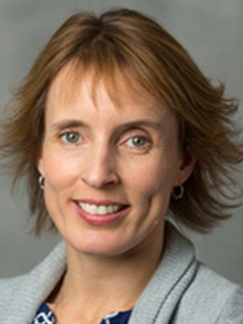
The group believes they’re empowering primary care providers of the future to attain the skills they need to address some of the beginning points of child and adolescent mental health care. “They will know how to screen for depression, anxiety, and suicidal thoughts, and how to start the care these patients need,” said Cullen (pictured here).
The work the group is doing is having an impact. “Anecdotally, the level of expertise in behavioral health care our learners have been able to provide in the primary healthcare setting is substantially greater than I’ve seen in other years,” said Borman-Shoap. “We have residents who are cross-tapering SSRIs [switching a patient from one antidepressant to another] and talking about subtle nuances of bipolar disorder,” she said. “These conversations didn’t happen before in our clinic.”

Nurse practitioner learners are also benefiting. “While they’re not in the clinic, they have observed some of the sessions and are sharing that information with their peers,” said Benbenek (pictured here). “It has helped them ask better questions and understand how to identify different conditions and follow up appropriately. It’s been really valuable for them.”
Integrated care is holistic care
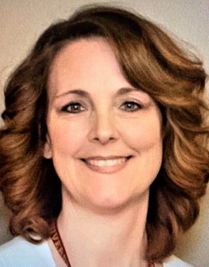
The benefits of the model extend to patients and their families. “They come in knowing that all of the needs of their child will be addressed – integrated care is holistic care,” said Berge (pictured here). “Parents can start a conversation about something they may be worried about regarding their child and know that we have an expert right at our fingertips to help with their concerns, whether it be physical, mental, or social health. That’s something our patients and their parents appreciate. They can trust and count on their primary care providers.”
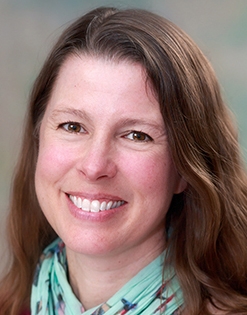
In addition to the benefits the integrated model gives patients, families, and learners, it also has a positive impact on providers. “There is an increased sense of provider wellbeing from being able to share the care for worrisome patients they don’t feel equipped to manage on their own,” said Danner (pictured here). “Just because a patient needs a higher level of care doesn’t always mean they get it. This model helps providers feel supported.”
“It’s our dream”
Borman-Shoap agrees. “It’s our dream to have a mental health professional working right with us,” she said. “I ask our consultant many questions each Wednesday – how would you do this, how would you ask this kind of question, what medication would you use in this situation? I feel better prepared to meet the needs of my patients and they have been so grateful. We’re starting their mental health care in a familiar setting with the support of an expert right at our side.”
A key strength of this project is its interprofessional nature. “Typically, we [psychiatry faculty] don’t necessarily get to talk with folks from family medicine or pediatrics or nursing,” said Lingras. “As a result of this collaboration, I’m learning so much more about the whole health of the child, such as the kinds of things that get discussed during a pediatric well visit. That has been so helpful in informing my work as a psychologist.”
Nice in-between
There are a handful of integrated health models, but many require an entire hospital system to take on the program. “What is useful about our model from a research and learning standpoint, is that you can start with just one clinic or a handful of clinics without requiring an entire hospital to take on the funding and staffing burden of a large-scale project,” said Lingras. “This is a nice in-between.”
The group is collecting data about how learners are viewing the new model’s impact. “We’ll be publishing about those results and the effectiveness of what we’re doing,” said Cullen. “We will also try to obtain additional funding to extend the program.”
If you have any questions about this project, feel free to contact Project Coordinator Greta Alquist, who the group believes deserves a huge shoutout as, “She is the glue that holds all this together.”
Note
1 Fremont WP, Nastasi R, Newman N, Roizen NJ. Comfort level of pediatricians and family medicine physicians diagnosing and treating child and adolescent psychiatric disorders. Int J Psychiatry Med. 2008;38(2):153-68. doi: 10.2190/PM.38.2.c. PMID: 18724567
2 Pediatric Residency Education and the Behavioral and Mental Health Crisis: A Call to Action
3 Baird, M., Hepworth, J., Myerholtz, L., Reitz, R. & Danner, C. (2017)Fifty Years of Contributions of Behavioral Science in Family Medicine. Family Medicine, 49(4): 297-304.
